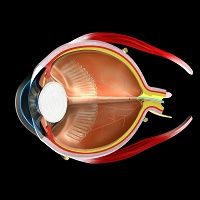Article
Lucentis Shown to Improve Diabetic Macular Edema Resistant to Other Therapies
Author(s):
Lucentis can improve DME that has proven resistant to laser therapy, Trivaris, and Avastin, according to a retrospective review of chart data from the Indianapolis University School of Medicine.

Diabetic macular edema (DME) can be resistant to multiple types of treatment. Based on anecdotal reports that ranibizumab (Lucentis/Roche) is effective in treating DME that is resistant to other therapies, a team of investigators retrospectively reviewed the charts of patients with treatment-resistant DME at Indiana University School of Medicine, Indianapolis, IN, to determine whether Lucentis could treat these patients effectively. Results of the study were reported in a recent issue of Retina.
The study included consecutive patients diagnosed with treatment-resistant CME who received their first intravitreal injection of ranibizumab, 0.3 mg, from November, 2012, through December, 2013.
Treatment-resistant DME was diagnosed if a patient showed persistent DME for 6 months or more despite at least 2 previous treatments, including any combination of the following
- macular laser photocoagulation (27 eyes)
- intravitreal triamcinolone acetonide (Trivaris Intravitreal/Allergan; 9 eyes)
- intravitreal bevacizumab (Avastin/Roche; 33 eyes)
- intravitreal dexamethasone implantation (Ozurdex/Allergan; twice in both eyes of one patient)
The study population was restricted to patients who had been diagnosed with diabetes and were using either an oral antihyperglycemic agent or insulin. Patients were excluded from the study for a number of reasons: if baseline best-corrected visual acuity was better than 20/40; if central subfield thickness (CST) as determined by spectral-domain optical coherence tomography was <300 μm; or if they received <6 months of follow-up. Eyes observed to have macular ischemia during fluorescein angiography were excluded from the study.
After application of these criteria, 33 eyes (of 22 patients) with treatment-resistant DME were included in the study. In all patients, DME had lasted for 6 months or more before Lucentis therapy was initiated.
Before Lucentis therapy was started, mean BCVA was 20/100, and mean CST was 384 μm. After an average of 48 weeks, during which an average of 6 Lucentis injections were given, mean visual acuity improved to 20/90, and mean CST improved to 335 μm. BCVA and CST were found to have improved with number of days of follow-up (P < 0.01 for both) as well as with number of Lucentis injections, although the latter associations were not statistically significant. No endophthalmitis, retinal detachment, arteriothrombotic events, or deaths occurred during the study period.
As a result, the Indiana University team concluded that ranibizumab can improve DME that has been resistant to treatment with laser therapy, intravitreal triamcinolone acetonide, and bevacizumab. They stressed that this finding is particularly important because these cases can be especially hard to treat, which makes even modest improvements “clinically meaningful,” especially in those with bilateral disease.
However, they acknowledged that their study was limited by its retrospective design, as well as lack of a control group and long-term follow-up. The team also acknowledged that tachyphylaxis may account for the modest benefit seen after switching therapy in these patients.
Based on the results of DRCR.net Protocol T, they speculated that switching to aflibercept (Eylea/Regeneron) might benefit these patients more than switching to ranibizumab. They added that future prospective trials are needed to confirm that switching from bevacizumab therapy to either ranibizumab or aflibercept will provide notable improvement for those with persistent DME.




